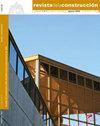配合比设计变量对自固结混凝土和易性、流变性和稳定性的影响
IF 1.4
4区 工程技术
引用次数: 0
摘要
本研究探讨了水灰比(w/c)、坍落度、粗总骨料比(CA/TA)和最大骨料粒径(Dmax)等基本配合比设计变量对自固结混凝土主要特性的影响。混合物的w/c为0.42或0.50。CA/TA在0.45 ~ 0.53之间。通过改变高效减水剂的含量,可将坍落度调节为550、650或720±20 mm。Dmax为10、15、20 mm。进行了v型漏斗、l型箱、流变仪、筛网偏析试验和作者新开发的动态抗偏析试验方法。每个变量对测试结果的影响有效地总结在一个表中。w/c、CA/TA和Dmax的增加降低了高效减水剂的需要量,提高了流动性。坍落度越大,w/c和CA/TA越高,粘度越低。较高的CA/TA和Dmax值降低了传代能力。坍落度流量(或高效减水剂含量)、CA/TA和Dmax的增加对稳定性产生了影响。总体而言,相对于CA/TA和Dmax, w/c和坍落度流动对SCC特性的影响更为显著。几个试验结果之间有很好的相关性。本文章由计算机程序翻译,如有差异,请以英文原文为准。
Effects of mix-design variables on the workability, rheology and stability of self-consolidating concrete
This study investigates the effects of basic mix design variables such as water/cement ratio (w/c), slump flow, coarse-to-total aggregate ratio (CA/TA), and maximum aggregate size (Dmax) on the main characteristics of self-consolidating concrete. The w/c of the mixtures was either 0.42 or 0.50. The CA/TA ranged between 0.45 and 0.53. Slump flow was adjusted to 550, 650 or 720 ±20 mm by varying the superplasticizer content. Dmax was varied as 10, 15 and 20 mm. V-funnel, L-box, rheometer, sieve segregation tests and a new test method, recently developed by the authors, for dynamic segregation resistance were performed. The effect of each variable on the test results were effectively summarized in a table. Increasing the w/c, CA/TA and Dmax decreased the superplasticizer demand and increased the flowability. When the slump flow, w/c and CA/TA were higher, viscosity was found to be lower. Higher values of CA/TA and Dmax were found to reduce the passing ability. Increasing the slump flow (or superplasticizer content), CA/TA and Dmax disturbed the stability. Generally, the effects of w/c and slump flow on the SCC characteristics were more pronounced when compared to those of CA/TA and Dmax. Good correlations were obtained between several test results.
求助全文
通过发布文献求助,成功后即可免费获取论文全文。
去求助
来源期刊

Revista de la Construccion
工程技术-工程:土木
CiteScore
2.30
自引率
21.40%
发文量
0
期刊介绍:
The Journal of Construction is aimed at professionals, constructors, academics, researchers, companies, architects, engineers, and anyone who wishes to expand and update their knowledge about construction. We therefore invite all researchers, academics, and professionals to send their contributions for assessment and possible publication in this journal. The publications are free of publication charges.
OBJECTIVES
The objectives of the Journal of Construction are:
1. To disseminate new knowledge in all areas related to construction (Building, Civil Works, Materials, Business, Education, etc.).
2. To provide professionals in the area with material for discussion to refresh and update their knowledge.
3. To disseminate new applied technologies in construction nationally and internationally.
4. To provide national and foreign academics with an internationally endorsed medium in which to share their knowledge and debate the topics raised.
 求助内容:
求助内容: 应助结果提醒方式:
应助结果提醒方式:


